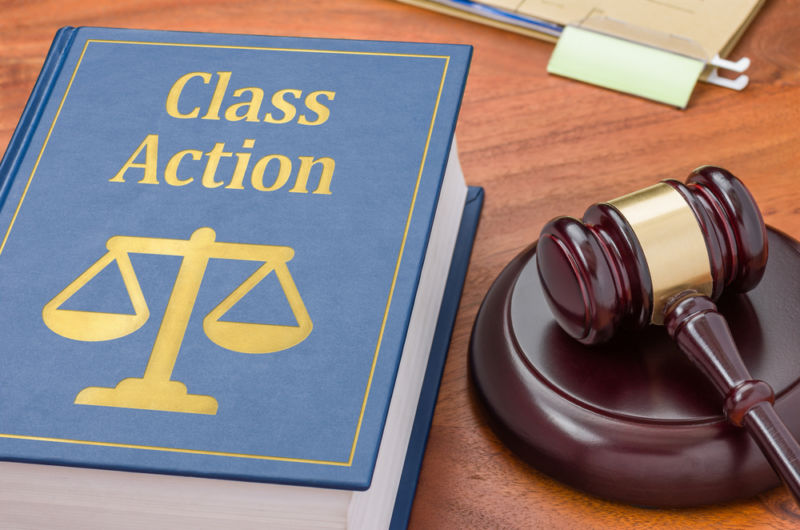Justice for All: The Duty of Class Action Lawsuits in Shielding Customers
Justice for All: The Duty of Class Action Lawsuits in Shielding Customers
Blog Article
Recognizing Class Activity Lawsuit: A Guide for Lawyers
Class activity suits have ended up being an indispensable part of the lawful landscape, allowing for the debt consolidation of multiple cases right into a solitary action. By diving into the details of course activity suits, this overview equips legal representatives with the understanding and devices needed to effectively browse this complex location of legislation.
The Essentials of Class Action Claims
Class activity legal actions are a legal system used to combine similar insurance claims from a group of individuals into a solitary lawsuit, giving a efficient and economical method to seeking justice and resolution. This type of suit permits a representative complainant, acting on part of the whole class, to bring a case against an accused that has actually supposedly created damage or went against the rights of multiple individuals.
The fundamental needs for bringing a class action claim consist of numerosity, commonness, typicality, and competence of representation. Numerosity refers to the fact that the class should be so big that joinder of all members would be impractical. Commonality implies that there need to prevail inquiries of law or truth that are shared by all participants of the class. Typicality calls for that the claims of the representative complainant are regular of the cases of the whole course. Competence of representation guarantees that the representative complainant will effectively represent the rate of interests of the entire course.
Class action legal actions can be helpful for both complainants and defendants. For accuseds, it supplies the opportunity to effectively resolve several cases in a single claim, staying clear of the need to safeguard against many specific suits.
Identifying and Assessing Prospective Course Members
After establishing the standard requirements for a class activity lawsuit, the next action is to recognize and evaluate prospective course participants. This process includes establishing who may belong to the course and reviewing their claims to figure out if they fulfill the necessary criteria.
To determine prospective class members, lawyers generally carry out substantial research study and collect appropriate info. This may include evaluating files, carrying out interviews, and analyzing records to identify people or entities that might have been affected by the alleged wrongdoing. It is essential to establish a comprehensive and clear list of possible course members to ensure that all affected events are consisted of in the claim.
When potential course members have actually been determined, the next action is to evaluate their cases. This includes evaluating the qualities of each private claim to establish if they satisfy the lawful demands for class qualification. Lawyers have to thoroughly assess the realities, evidence, and lawful theories of each possible class member's insurance claim to ensure that they have a sensible situation.
Evaluating potential class participants likewise entails determining whether they satisfy the course definition and have actually experienced comparable harm as a result of the accused's actions. This calls for contrasting the facts and scenarios of each prospective class member's scenario to the claims and lawful theories placed forth in the legal action.
Browsing the Class Accreditation Process
To efficiently browse the course accreditation process, lawyers have to vigilantly stick to the procedural demands established forth by the court. Course qualification is a vital action in a class action lawsuit, as it determines whether an instance can proceed as a course activity, representing a group of people that have similar claims versus an accused. The procedure involves pleasing particular standards, such as numerosity, commonness, typicality, and competence of representation.
To start with, legal representatives must develop numerosity by demonstrating that the class is so big that individual joinder is unwise. This needs a comprehensive evaluation of the insurance claims and defenses entailed.
Next, attorneys should reveal typicality, which implies that the depictive plaintiff's cases are normal of the insurance claims of the class participants. This makes sure that the passions of the depictive plaintiff align with the passions of the course. Legal representatives must demonstrate competence of representation, implying that the representative complainant and their advise will rather and adequately stand for the interests of the class.
To navigate this process efficiently, legal representatives need Extra resources to completely prepare by performing comprehensive research study, collecting evidence, and establishing a compelling debate that pleases each of these criteria. They should also be prepared to reply to any kind of challenges or objections raised by the defendant. By carefully sticking to the step-by-step needs established forth by the court, attorneys can raise their possibilities of getting class qualification and advancing the interests of the class members.

Trick Methods for Handling Course Action Litigation
Upon efficiently browsing the course accreditation process, lawyers have website link to then implement key techniques for efficiently managing course activity lawsuits. These approaches are important to ensure that the case continues efficiently and effectively, inevitably making the most of the opportunities of a favorable outcome for the course participants.
One key strategy is to establish a natural and solid lawful group (Class action lawsuit). This includes setting up a group of lawyers with experience in course action lawsuits, as well as other relevant areas such as the particular sector or topic included in the instance. A versatile team can bring different point of views and abilities to the table, boosting the general effectiveness of the litigation
Another crucial method is to establish a well-thought-out and thorough lawsuits strategy. This plan must detail the general objectives of the situation, along with the particular legal theories and debates that will be gone after. It must likewise include a timeline and budget plan to make certain that the instance remains on track and within the assigned sources.
Furthermore, lawyers should proactively engage with the class participants throughout the litigation procedure (Class action lawsuit). This includes providing normal updates on the development of the case, see this here looking for input and comments from the class members, and attending to any type of concerns or concerns they might have. By promoting open communication and partnership, attorneys can build trust fund and support amongst the class participants, which can be important in attaining a successful resolution
Settling Class Action Suits: Negotiation and Approval
When it involves working out course action claims, effective settlement and getting approval are essential action in attaining a resolution. Class activity lawsuits are complicated and entail a large number of plaintiffs, making it critical to reach a negotiation that is satisfactory and fair to all celebrations entailed.

Once a settlement contract is reached, it needs to be accepted by the court. The court's duty in this procedure is to make certain that the negotiation is fair, affordable, and adequately safeguards the rate of interests of the class members. The court will think about aspects such as the nature of the cases, the toughness of the proof, the prospective healing for the class members, and any objections raised by class participants.
Getting court authorization is vital as it gives finality to the negotiation and secures the rate of interests of the class members. It ensures that the negotiation is binding and enforceable, and course participants can get their rightful payment.
Final Thought

Course action legal actions have become an integral component of the legal landscape, permitting for the debt consolidation of several cases right into a single activity. Class qualification is a vital step in a course action claim, as it identifies whether a case can proceed as a course action, standing for a team of individuals that have comparable insurance claims versus a defendant. By faithfully adhering to the step-by-step requirements set forth by the court, legal representatives can enhance their opportunities of obtaining class qualification and advancing the rate of interests of the course members.
The court will certainly consider aspects such as the nature of the claims, the stamina of the proof, the possible healing for the course participants, and any arguments raised by course participants.
By identifying and examining potential class participants, attorneys can figure out the stability of a class action suit.
Report this page